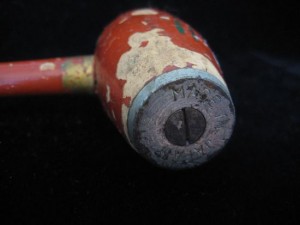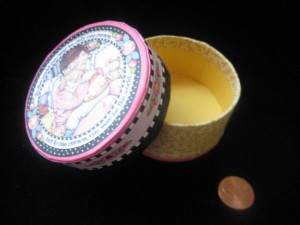Object + Made-up story = Advertising?
Early on in Significant Objects, someone commenting on a BoingBoing post about the project opined:
I hate to tell you this, but you’ve basically just reinvented advertising. Good advertising takes a product and imbues it with some kind of story. The only differences are that 1) generally speaking the product is new instead of used, 2) the story is usually less specific to any individual and more generally applicable to the mass-produced nature of the product and 3) the artifice in the story is more or less deliberately concealed.
Another comment-er, noting those rather extensive and far-reaching “only differences,” replied: “Oh, is that all? LOL. Anyway, perhaps both advertising and the Significant Objects project are stories, because everything is a story.”
It’s a fair point that the difference between the way we bring Significant Objects readers “in on” what we’re doing is distinct from artifice that is “deliberately concealed.” On the other hand, a Chicago Tribune article about the project explored the parallels between Significant Objects and advertising in a more thoughtful way, citing examples that fall on a continuum of disclosure and artifice, from McDonaldland characters to the J. Peterman catalog to high end grocers putting out “little cards at the foot of produce that explain how the farmer who harvested this broccolini owns seven chickens and drives his daughter to school in a biodiesel-fueled pickup truck every morning.” (The Tribune piece is here.)
In the past I’ve defined branding as the process of attaching an idea to a product. There’s not too much logic-torture involved to say that this puts me in the camp that does see some connection between storytelling and advertising. Although I guess I would say that in addition to the advertising’s shortcomings on the honesty front, branders tend to tell nonlinear, abstract stories, as opposed to straight narratives. Especially in recent years.
Long ago, advertising might mean a page of a magazine with a big hunk of text (that often read quite a bit like a short story). Nowadays a brand like Axe, or Burger King, tells its “story” in what Henry Jenkins calls a “transmedia” manner: Across multiple platforms, in ways that might sense however you encounter them, but that are simultaneously cumulative. In fact I think marketers are way ahead of the entertainment industry (Jenkins’ focus) in transmedia storytelling, even if the branding version of it basically shrugs off linearity. The Dove Campaign For Real Beauty, for instance, posits a line of facial creams and whatnot as embodying a set of ideas about the nature of beauty itself, expressed via billboards and commercials, but also via text-message voting schemes, media appearances by its participating models, at least one stage play, and other murketing tactics. The “story” has no beginning, and no end. (It will probably stop at some point, but there will be no finale.) But there’s always a story of some kind — and in fact I’ll but the story always fits the Totem, Talisman, Evidence, and/or Fossil categories that my Significant Objects partner Joshua Glenn has defined.
The way our writers have approached stories has certainly varied. Daily Show writer Tim Carvell’s Round Box story is very much a narrative (albeit one with surprises). Bee Season/Wicket’s Remedy author Myla Goldberg’s approach to giving Significance to a Hand Held Bubble Blower is not. Nor is David Shield’s remarkable Military Figure piece. And those are just recent examples.
It would actually be rather exciting to tell the “story” of one of our Significant Objects in a truly transmedia manner. Our writers don’t have quite the budget that Unilever provides its various agencies to tell the story of Dove stuff. One of our contributors, Colson Whitehead, did surprise us by extending the story of his object into his Twitter stream; his Tweets not only amplified what he’d written, but broke the “fourth wall” (as they used to say mass-com classes, and for all I know still do) with Tweets purportedly about the motives of bidders.
It was great storytelling, and at least a little bit transmedia. And, yes, it was almost certainly an effective strategy in boosting the auction for Whitehead’s Significant Object. The wooden mallet that he wrote about, which was bought for 33 cents at a yard sale, sold for $71.





 "
"













 Kim Fellner's book
Kim Fellner's book  A
A
Reader Comments